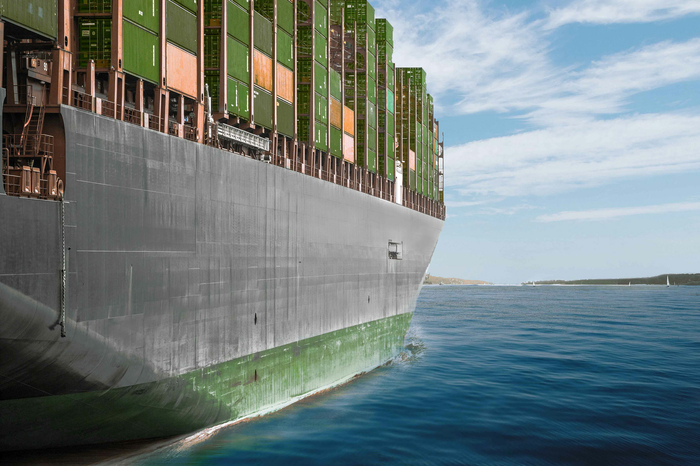We would like to inform you further about the current situation in the Red Sea and the resulting consequences for international sea freight transportation.
Change of routes between Asia, Oceania, the Middle East and Europe
As the danger for crews, ships and cargo has not changed and remains high due to possible shelling by Houthi rebels in the Strait of Bab al-Mandab, all major shipping companies have instructed their container ships to use the route via the Cape of Good Hope with immediate effect and until further notice. This applies to both westbound and eastbound traffic. These decisions suggest that the shipping companies do not expect the situation to improve in the near future.
The route via the African Cape leads to significantly higher costs for the shipping companies compared to the route through the Suez Canal. An additional 3000 nautical miles have to be covered before the ships reach European ports or China/Asia. The additional fuel consumption depends on the ship, the speed and other external factors. However, it can be assumed that an additional 900 to 1000 metric tons will be consumed. Assuming heavy fuel oil (IFO380), this corresponds to additional costs of currently just under USD 500,000 per voyage.
Transit through the Suez Canal costs shipping companies between approximately USD 400,000 and USD 800,000, depending on the ship. Each metric ton of fuel burned corresponds to approximately 3.15 tons of CO2 emissions, which further increases the costs for the shipping companies. The transit times between Asia and Europe (vice versa) are expected to increase by 10 to 14 days in both directions.
Impact on sea freight rates
Almost all shipping companies have already announced surcharges for shipments from 18.12.2023 that originally pass through the Suez Canal. An exact quantification of the additional costs is not yet known at this stage, so these surcharges must be taken into account in addition to the already significantly higher FOC levels ex China/Asia for shipments in January 2024. In some cases, the FAK rates from the main Chinese ports to the main North European ports currently amount to up to USD 4000 per 20'GP and up to USD 6000 per 40'GP/HQ.
Long-term contracts are also affected by both the peak season surcharge and the shortage of shipping space, which arises in the short term due to the rerouting of ships that are already underway and in the medium term due to longer transit times. The artificial shortage of shipping space by the shipping companies through so-called blank sailings further exacerbates this situation. It remains to be seen whether and to what extent the shipping companies will revise these decisions and feed additional capacity into the market.
The supply of crude oil from the Middle East to the European markets is likely to be negatively affected, as the oil tankers originally also used the route through the Suez Canal and will now resort to the longer route via the Cape of Good Hope. The price of Brent crude has risen by 6.7% in the last 7 days. The price of WTI oil has risen by 6.4% in the last 7 days. The traditionally high demand for shipments from China ahead of the Chinese New Year on February 10, 2024 and the current situation certainly suggest an extremely turbulent start to the year, which will be associated with significant rate increases.
Effects on the planned ship arrivals and the situation at the terminals
The decision by the major shipping companies to have their container ships sail around the Cape of Good Hope instead of through the Suez Canal has of course also an impact on the planned ship arrivals. The timetables are obsolete and we are currently trying to obtain the updated ship arrivals from the shipping companies. The new timetables are being planned in consultation between the alliance partners and the terminals.
However, it is sometimes difficult to gain official information about individual ships. Some ships that are currently in a waiting position have presumably not yet received any instructions. The terminal operators will do everything possible to avoid a situation similar to that in the spring of 2021, when large container ships all arrived in European ports more or less at the same time, leading to significant congestion (the so-called ketch-up effect). However, it should be emphasized that the initial situation today is much better than in 2021, when demand was at a record level due to the Covid pandemic.
Proclamation of "force majeure" under the terms of the Bill of Lading
As the attacks by the Houthi rebels are so-called acts of war, some shipping companies (including Hapag Lloyd, CMA-CGM and YangMing) have already referred to the "force majeure" clause stated in the Bill of Lading and invoked it for certain ships. This clause allows the shipping companies to unload the containers from the ship en route at any port if necessary. In this case, the shipping company's obligation to transport the containers to the booked port of unloading does not apply.
Any costs that may arise from the declaration of force majeure have to be covered by the consignee named in the Bill of Lading and must then be passed on to the client. The costs may include storage charges, terminal charges, transshipment charges, additional sea freight, sea freight surcharges and other costs. You can view the relevant clause in the Terms & Conditions of the corresponding Bill of Lading.
We will of course keep you updated on all relevant information.


